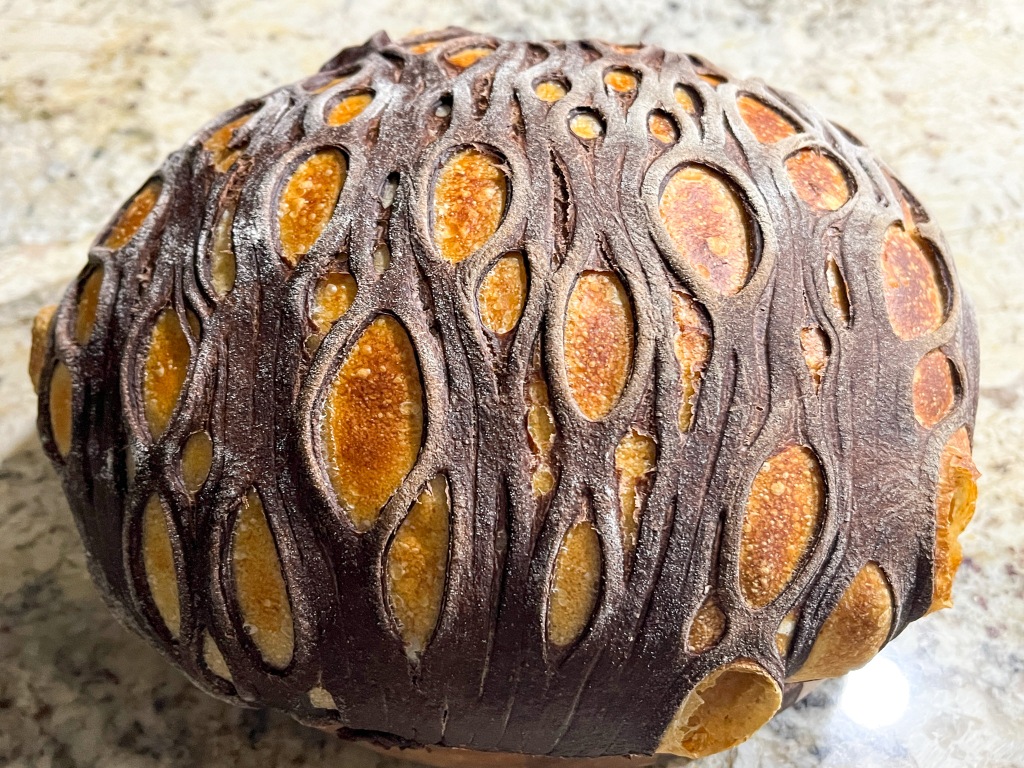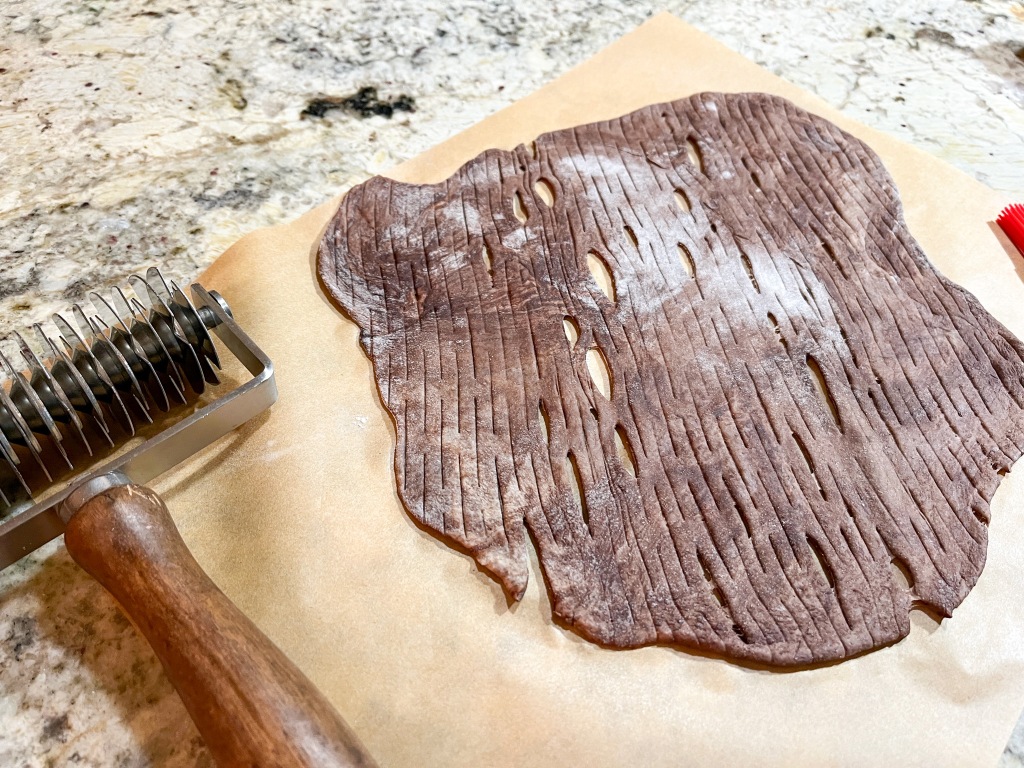I consider this a work in progress, but for a first time using this technique, I am happy with it. You can use pretty much any formula you like, but go for a minimum of 500g total flour, as you will be removing 150g of dough to make the lattice. To cut the lattice, consider getting this gadget. You can always try to cut it by hand, but I imagine that would be quite tricky… at least for me!
COCOA LATTICE SOURDOUGH
(from The Bewitching Kitchen)
400g white bread flour
150g whole wheat
80g sourdough starter at 100% hydration
9 g salt
360g water (I had to add flour as I mixed the dough, it was too sticky)
30g cocoa powder (see comments about it in the method description)
After mixing the dough in the Kitchen Aid for 4 to 5 minutes as I normally do, I went through a series of folding/kneading at 45 minutes intervals for a total of 5 cycles. At that point, I removed 150g of the dough and added the cocoa powder, kneading it into the dough, as best as I could. Not all the amount was incorporated, but the dough was dark enough.
The main dough was shaped as a boule and placed in the fridge overnight. The dark, smaller portion was covered with plastic wrap and also placed in the fridge. Next morning the dark dough was rolled as thinly as possible and cut with the pie lattice gadget. That was carefully placed on top of the main dough right before baking. Keep in mind that the moment the lattice touches the dough you won’t be able to move it and adjust it.
The bread was baked at 450F for 30 minutes covered, and 15 minutes without a lid. Slice after completely cool.
ENJOY!
to print the recipe, click here
Comments: The picture above was my first attempt at rolling the lattice, and it was too thick, it barely opened at some parts. So I gathered that dough and rolled it again. Try to go as thinly as possible, which was not very easy, the gluten tends to put up a fight. I definitely want to do it again, using other colors, but mainly making sure to roll the lattice thinner. Wish me luck! Why don’t you try it also and let me know how it goes for you? 😉
We did not detect any particular cocoa taste on the bread. The dark part gets a different texture, almost like a cracker. We both loved it… Stay tuned for more lattice adventures in the bread world!
.
ONE YEAR AGO: Pistachio Sugar Cookies, the Uzbek Way
TWO YEARS AGO: Carrots and Zucchini Stir-Fry with Peanut Sauce
THREE YEARS AGO: Cookie Therapy, Anyone?
FOUR YEARS AGO: The Quasi-Vegan Quiche
FIVE YEARS AGO: Not Quite Moqueca
SIX YEARS AGO: Roasted Butternut Squash with Cashew Nuts
SEVEN YEARS AGO: Mississippi Roast and the Open Mind
EIGHT YEARS AGO: Walnut-Raisin Bran Muffins
NINE YEARS AGO: A Star is Born!
TEN YEARS AGO: Chestnut Flour Sourdough Bread
ELEVEN YEARS AGO: Kinpira Gobo and Japanese Home Cooking
TWELVE YEARS AGO: Walnut Sourdough
THIRTEEN YEARS AGO: Thai Chicken Curry
FOURTEEN YEARS AGO: Zen and the art of risotto


























